The Division 2 Review
The Division 2 Review
The Division 2's unique loot and shoot gameplay will win it fans, read more in our review in progress
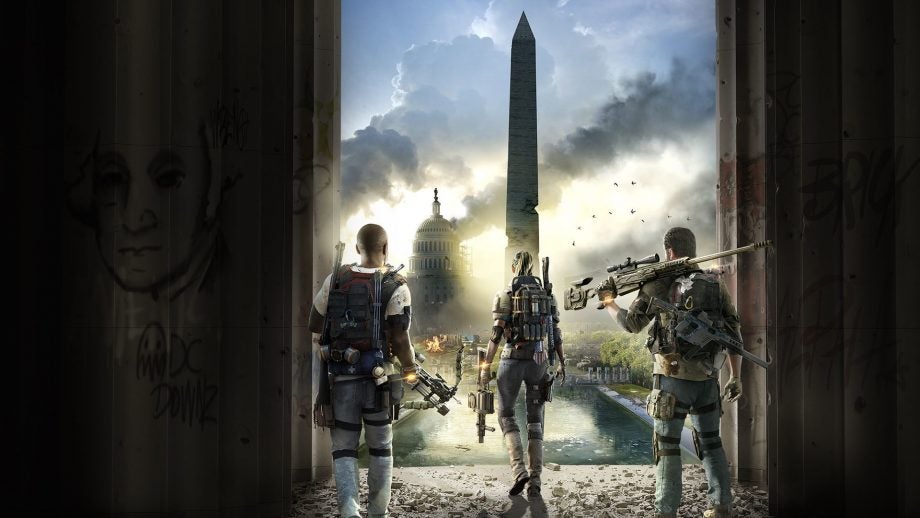
Verdict
For my money, The Division 2 is the best of the shooter genre. Anthem might be shinier, Destiny might have more going on, but The Division 2 combines challenge, gameplay and a compelling / simple progression system into one bundle.
Pros
- Compelling progression
- Easy matchmaking (and level up assistance for your friends)
- Weaponry feels distinct, even within the same classes
Cons
- Weapon attachment system oversimplified
- Armour modding system has some ridiculous requirements
- Lock to cover sometimes gets you hit in the face by melee bad guys
Key Specifications
- Review Price: £52
- Developer: Ubisoft
- Genre: Shooter
- Release Date: March 15, 2019
It’s the little moments that really make The Division 2 pop for me.
Sure, all the joy of cover-based combat is present and correct, pulling off killer flanks is compelling, and the palpable squee of excitement as a new gun drops and it’s just perfect for your loadout.
Instead, I’m talking about the moments of quality that mark this out as a series contender for the best loot and shoot blaster on the market, despite a series of niggling flaws. You’ll encounter moments of beauty as you stomp through the overgrown Washington D.C., or moments so well designed you almost forget you’re in an online multiplayer RPG.
For a certain type of player, i.e. fans of tactical shooters, or anyone after a more grounded feel than is offered up by stablemates Destiny and Anthem, The Division 2 also offers a solid, and mostly plausible, contemporary setting to run around in. This is paired up with cover-based combat that is frequently challenging but offers several rewarding ways to engage with enemies.
Related: Upcoming PS4 games
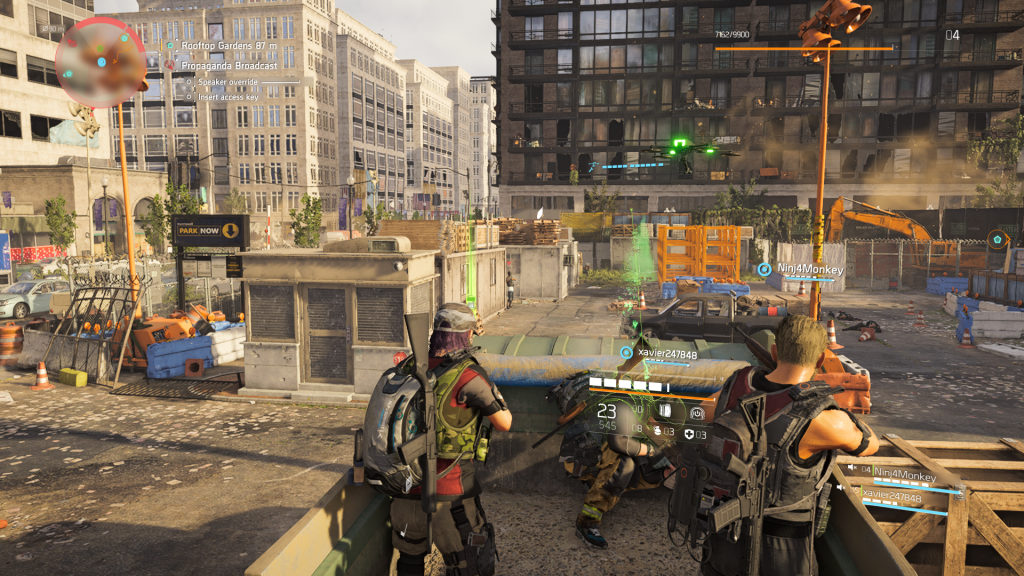
Cover is the name of the game in The Division 2 — you’ll find yourself dashing for protection as much as you will taking potshots at the enemy.
Strip away all of the progression and MMO systems that are weaved around the game, and The Division 2 is a highly competent third-person shooter, the likes of which are rarely made anymore. The systems can feel a little technical: tossing grenades feels like a clinical operation, and several of the new abilities need too much hand holding for my tastes, but generally, The Division 2 is a great time.
Getting around the first game’s bullet sponge problem, here many enemies will be clad in solid armour and shrug off small arms fire until you can blow through it. This is done visually, and you can clearly see the areas that have had their armour stripped away, letting you know where to shoot them. Make contact, and enemies bleed numbers, letting you know quite how much damage you’ve done.
If there’s one problem with The Division 2’s combat, it’s the addition of charging enemies, who try to get in close and deliver a savage close combat attack. As a tactical problem, this works well. Cover is king in The Division 2, so anyone that comes to upend that is great. However, the way you lock to cover means that actually evading their attacks is quite fiddly, and it can be incredibly frustrating to be beat down as you flail between cover desperately.
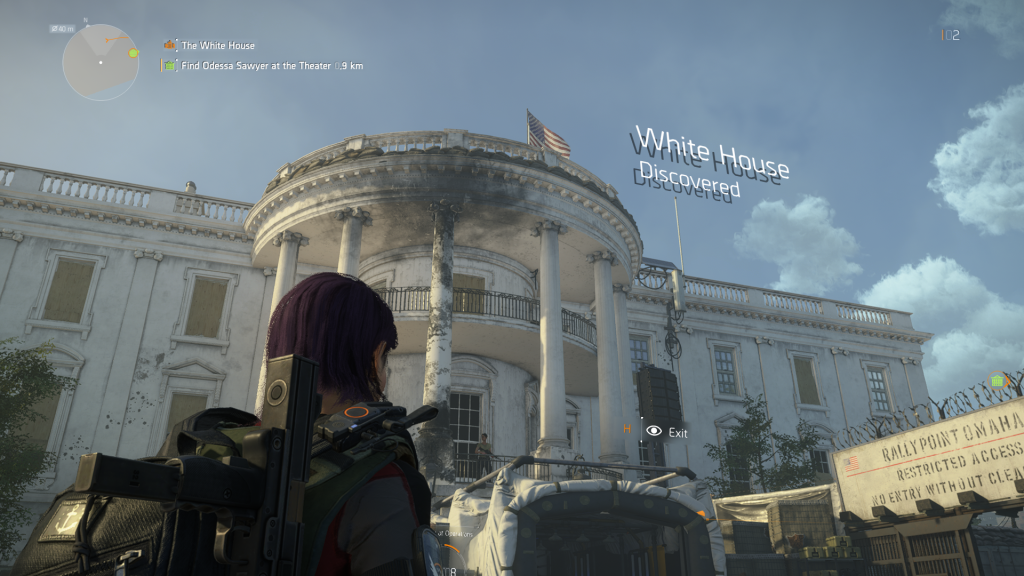
Burn the White House black – just like the British did in the War of 1812!
Each of the four factions in The Division 2 will assault you with different tactics. The Hyenas are raiders, hitting hard using improvised weaponry and guerilla tactics. The True Sons are alt-right goons, using military weapons, tactics and training to try and flush you out. Rounding out the original three factions are the Outcasts, religious zealots who have a thing for fire and suicidal assaults.
After you finish the main game, the Black Tusk appear. These feel a lot like some sort of well-equipped mercenary outfit, and as soon as you finish the main storyline these guys appear a lot. They invade previous missions, assault your captured strongholds and generally get in the way. In terms of tactics, they are the only people on the ground in Washington D.C. to have better technology than the player, and in addition to vicious firepower they’ll hunt you down with drones and even armoured robot hounds, similar to real-world Boston Dynamics robot the SpotMini, except with an autocannon strapped to its back.
The Division 2 has a bit of a cliche problem. The story is forgettable tripe about a clandestine military force called the Strategic Homeland Division, or The Division for short, full of sleeper agents ready to rise up, arm themselves and kick ass to help first responders and the U.S. government restore order in the event of a crisis.
Related: Best Xbox One games
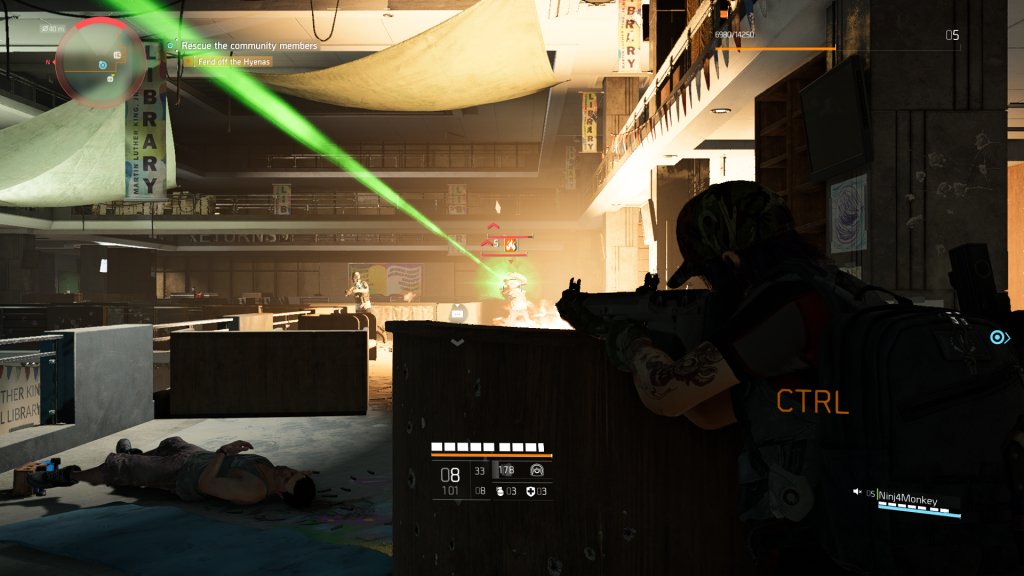
While the story in The Division 2 isn’t all that, it’s also thankfully not that present, allowing you to get on with the business of running and gunning.
In the previous game, set in New York midway through the Green Flu crisis that has destroyed America, this made sense. New York was a city on the brink, down but not completely out. The politics of blasting through low-rate thugs and looters was all over the place, but at least it made sense.
Cut to Washington, D.C., six months later. The government has largely collapsed, law and order has eroded. Yet, you’re still running around blasting ‘the bad guys’ while helping ‘the good guys’ to establish settlements. I found myself frequently asking myself why, and what sort of authority you had. This won’t bother many people, but it’s played completely straight here and makes very little actual sense.
The story is nonsense, but the pro-gun ‘Only a man with a gun can save society’ message is politically a little grim. You’re not shooting looters anymore, as was the case with the original game, but only because they’ve adopted the name Hyenas instead.
There’s enough technobabble in here about EMP devices, weird S.H.D. technology or the S.H.D. network you spend a lot of the game trying to get online to keep fans of Tom Clancy’s particular brand of technological military fetishism happy, but if you stop too think too hard about any of it, it falls apart.
Related: Best Nintendo Switch games
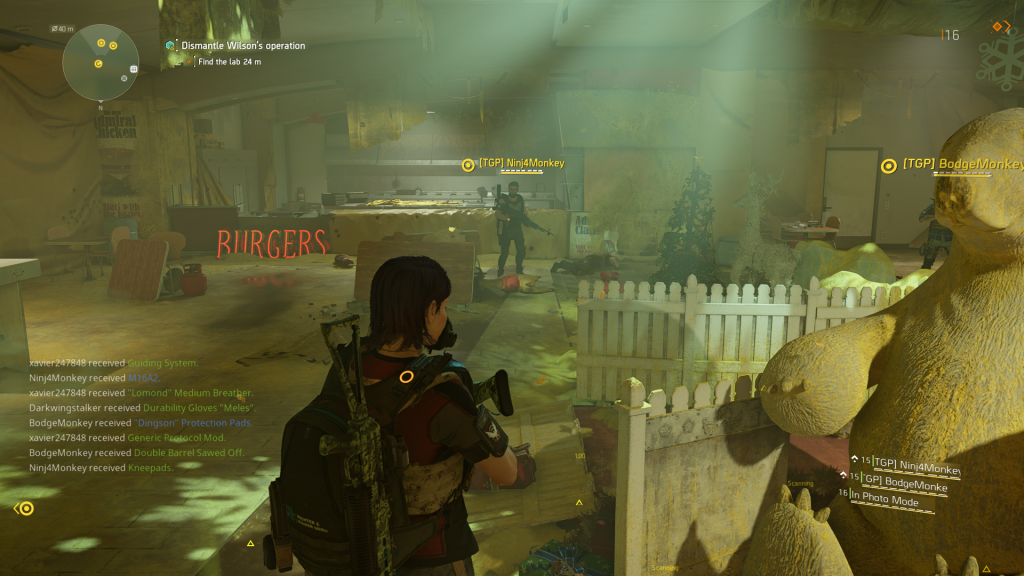
While the story is not super-engrossing the setting and atmosphere most certainly is, with several environments feeling as if they’ve been hastily abandoned.
This is a shame, because Washington D.C., the fictionalised overgrown city that serves as the game’s open world, is an incredible achievement. Wandering the city is engaging due to the dense cityscape itself, which uses verticality and some smart detailing in combination with the remarkable agility the game bestows on characters to open up plenty of flanking routes but also shortcuts for ducking around the city, too.
Several months after the epidemic, the city is overgrown, and no one has bothered to clean up the Christmas mess, meaning presents, tinsel and even a few wintry animals are hidden in the middle of the humid summer.
When it works, it’s almost like starring in a shootout from Michael Mann action thriller Heat, with detritus flying as you and three friends bound from cover to cover, covering each other and flanking as you try to survive waves of enemies.
This feeling doesn’t move as you duck into The Division’s campaign. The missions, the parts that you’ll run through again and again, are smartly designed and visually a treat. An early mission in the View Point Museum is full of military iconography, with video screens pumping out the sort of MAGA baiting nonsense that you would expect from a bunch of paramilitary warlords making the most of the end of the world, and indeed, the True Sons are here to be shot amongst the vivid lighting and iconography. Later, you’ll visit the space museum and fight through a diorama of Mars, or help a VIP escape from an atrium by laying down covering fire as an attack helicopter saws a hole in the roof with heavy calibre weaponry.
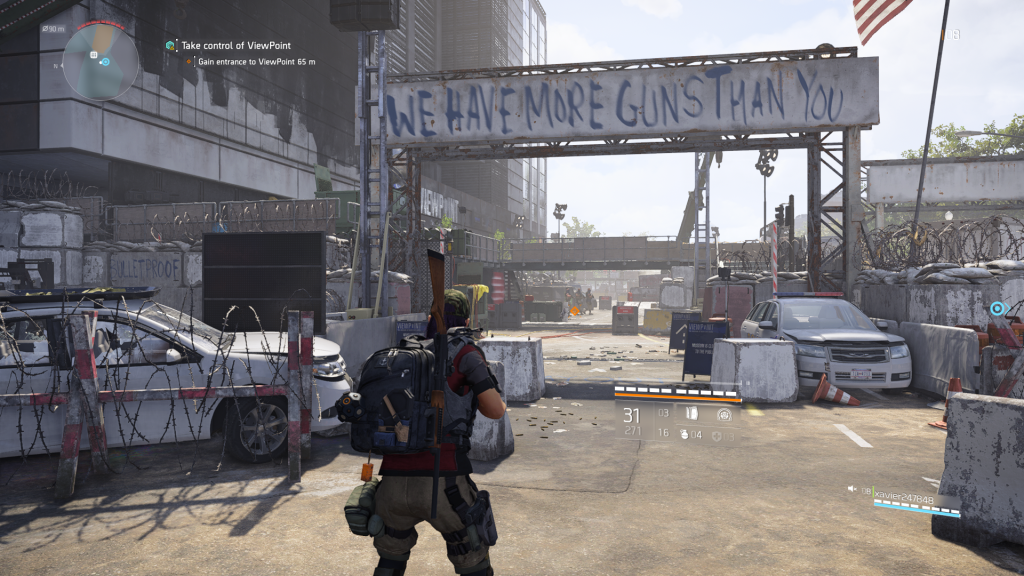
The ViewPoint Museum mission sees you taking out scores of trigger-happy Hyenas, who try to get their point across here, with a none-too-subtle banner.
I played the original The Division, and the missions on offer here in the sequel are a real step up. It feels like the team has been supported more and given the time they need to really put thought and effort into the game, and this shines through in the missions. Again, the end-game for these games focuses on re-running these missions again and again, so the news that they are actually fun (and that they’re visually a bit more interesting than snow and office buildings) is welcome.
The structure is still weak as you’re often shooting your way up or through a building toward a final confrontation with a named enemy. But you often won’t begrudge the time you’ve spent. A randomised weather system can make all the difference to each playthrough, as an outside sniping section can turn into a close-range slaughter in the fog, enemies rushing out at you from feet away without any forewarning. It adds to the atmosphere, but it’s also engaging
What I can’t comment on yet is the endgame, which is why the review is still marked as in-progress. Myself and several other Trusted Reviews staffers have now finished the game and reached max level. When this happens, the Black Tusk kick in the door and the game seems to start fresh with the PMC faction running around undoing all of your hard work. They’ve also “invaded” several missions, although I’ve yet to get a chance to run through these.
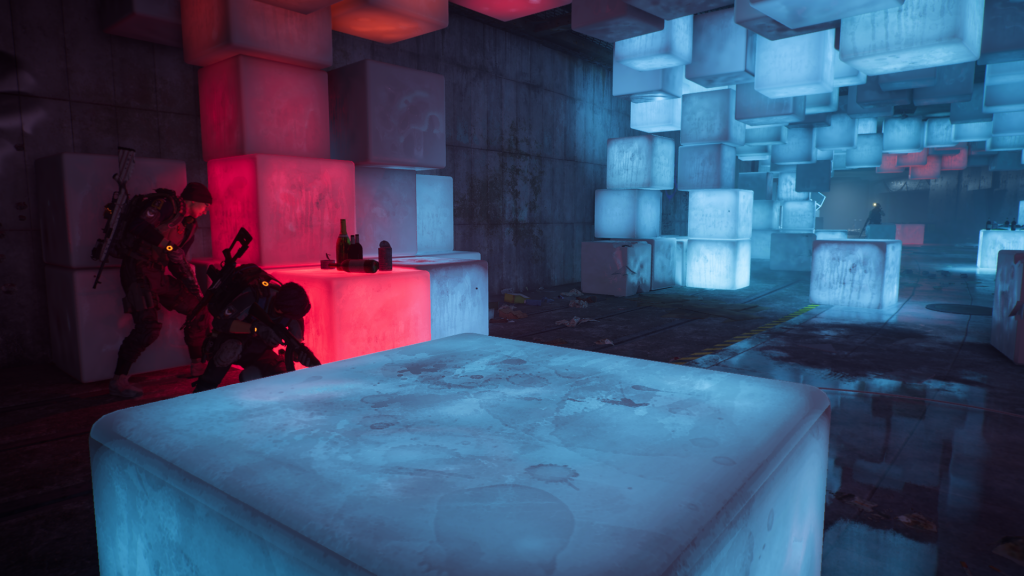
It might look like London’s Belowzero Ice Bar, but the dress code’s a LOT stricter.
Reaching Level 30 does give you a few perks straight out of the gate though as you’re given access to specialisations, tech trees which allow you to choose what sort of class you wish to play as, in addition to giving you access to powerful weaponry like a crossbow with explosive bolts. Again, I haven’t seen the big effect this has, but it sure is fun to hit an enemy with an explosive-tipped crossbow bolt and watch as they explode a group of their friends.
The class system also offers a bit more diversity, as the perk and gear system in the game up until that stage is the same for every character, with every mod and perk accessible by everyone. As a result, characters can feel homogenous, and this specialisation talent offers a bit of extra flair. There are three in the game at launch: demolitionist, sharpshooter and survivalist. You can easily switch between the three and each of them have their own independent levels, represented by points you can invest into skills. As a result, you don’t need to level up separate characters as you can quickly switch between specialisms and loadouts.
The game’s Dark Zone and Conflict, both PvP areas, suffer from many of the problems of the first game. Here, shotguns rule supreme, and there’s a distinct player vs player meta feel that means players down to brawl will walk all over those who are just mopping up the AI.
I quickly bounced out of Conflict, and I’m not sure if I’d go back again. However, the Dark Zone is crucial for progress and has its own upgrade web letting you gain levels, perks and worth-the-risk loot drops to keep you coming back. Luckily, if any one player steps too far out of line, a DZ-wide manhunt will start, calling active agents from across the map to bring the bad guys to lead-based justice.
Where we’re leaving it, I’ve put 100 hours into the Division 2. The single player campaign is finished, and I’m making good progress on the endgame, which features a lot of unique Black Tusk missions, repurposing the same maps you adventured through the first time, but with different layouts and different story beats. There’s a lot here, and I feel like I’ve barely scratched the surface, but this is the way that MMO games work.
I can say for sure: The Division 2 is worth the price of admission. Get a few friends, cowboy up and enjoy the ride.
Verdict
The Division 2 is an excellent shared-world shooter and a how-to guide for big franchises looking to make a sequel.


